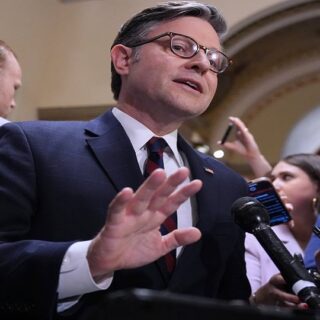
Of all the topics in the history of the Russian Empire, one of the most unknown topics is the history of political terrorism in the Russian Empire between 1866-1911.
It seems that the history of terrorism in pre-1917 Russia is likely to stay a Great Unknown for a long time.
I first encountered terrorism in the empire as an undergraduate student in 1973 when I read about the People’s Will (Народная Воля), the group that assassinated Tsar Alexander II on March 1, 1881. The heroism of the members of the People’s Will fascinated me back then. I wrote my master’s thesis in 1978 about the court reform of 1864 and political trials of the populists and members of the People’s Will from 1866-1894.
The heroism of the defendants at their trials was inspiring but I realized that the socialist defendants, their liberal defense lawyers and government prosecutors were using the trials only to advance their political agendas. Serving the interests of justice was simply not a priority for them.
Work as a journalist and librarian absorbed my attention for many years, but in 2015 I reactivated my Russian studies by meeting people in Russia and other countries on social media like Facebook. People were interested that I was a specialist in the history of political terrorism in the Russian Empire. So began my specialized work, presenting this topic at an academic institution in Vienna Austria, making video and live presentations at academic institutions in Russia, writing dozens of articles for Russian academic journals, an online magazine in Russia, and this magazine CommentaTHOR.com.
What amazes me is the surprise that people express when they read my work. They are surprised not just by the massiveness of terrorism in the Russian Empire, but even by the fact that terrorism happened in Russia and that it was the first major expression of mass terrorism in the modern world. Writing that mass terrorism originated in pre-1917 Russia often shocks people.
The topic is highly relevant because of continual outbreaks of terrorism in today’s world. Many aspects of political terrorism in the Russian Empire foreshadowed many tendencies in terrorism today. These aspects include the process of radicalization by which terrorists recruited followers and the involvement in terrorism of young people, women, members of ethnic and religious minorities.
Although many people still consider the Russian Empire a backward country, in many respects it was far ahead in certain political and social trends compared to many European countries at the time.
There is no doubt about the massiveness of terrorism in the Russian Empire, but the massiveness is often ignored in most history works.
Тhe history of political terrorism in Russia between 1866-1911 coincided with the European <<Era of Dynamite>> between 1870-1914 when anarchists and nationalists killed many people. Anarchists, generally in Spain, Italy and France, assassinated monarchs, presidents, prominent state figures and ordinary people and considered terrorism a form of “propaganda by the deed”. Nationalist terrorists, seeking autonomy or independence, generally operated in Ireland, the Balkans, and the Ottoman Empire.
Dutch researcher Beatrice De Graaf calculated that anarchists between 1880-1914 killed 160 people and wounded more than 500 people in Europe and the United States. [1, p. 144] Even more people were victims of nationalist terrorism, especially in the Balkans. For example, the population of Macedonia was only three million people in 1903. In 1907, British diplomats reported that there were 1,370 cases of violent deaths in Macedonia—four each day. [2, p. 309]
Terrorism in Russia between 1860 and 1900 took the lives of about 100 people, including Tsar Alexander II in 1881. [3, p. 3]. These numbers appear insignificant compared to the number of victims of terrorism between 1901-1911.
American historian Anna Geifman gave the following calculations on the massiveness of terrorism. Between October 1905 to the end of 1907, the number of government representatives—both civilian and military—reached 4,500. Victims from the general population included 2,180 killed and 2,530 wounded. The total number of victims was more than 9,000. Between January 1908-May 1910, the government recorded 19,957 terrorist acts and revolutionary robberies–<<expropriations>>. The dead included 732 government persons and 3,051 private persons and the wounded included 1,022 government persons and 2,829 private persons. The number of victims was 7,634. Geifman estimated that the total number of victims of revolutionary terrorism between 1901-1911 was about 17,000. [3, p. 21]
However, the massiveness of terrorism in the Russian Empire is often ignored and this contributes to why Russian terrorism is still a Great Unknown. When historians and political scientists write about terrorism in Russia they usually only mention the assassination of Tsar Alexander II in 1881 and a few spectacular assassinations carried out by the Combat Organization of the Party of Socialists-Revolutionaries in the early 20th century.
The ignorance of the nature of terrorism in Russia gets worse because many summary books about the history of European and world terrorism often group Russian terrorists under the category of anarchists. Although anarchists may have made up most European anarchists between 1870-1914, anarchists made up only part of the terrorists in Russia. The People’s Will organization between 1879-1894 was not an anarchist organization aiming at the overall destruction of the state. In fact, members of the People’s Will proclaimed that they were fighting for political freedom that would enable the state to make massive political and social changes.
Anarchists made up only part of Russian terrorists in the massive wave of terrorism between 1901-1911. Тerrorism in the early 20th century represented a crowded playing field of practitioners, supporters, and opponents. Parties and movements practicing terrorism included:
- Empire-wide socialist parties: the Socialists-Revolutionaries (SRs) who considered themselves the heirs of the People’s Will; the Union of Socialists-Revolutionaries-Maximalists who split from the SR party over the leadership’s decision to suspend terrorism; Social Democrats—both Bolsheviks and Mensheviks—despite the loud criticism of individual terrorism by G. V. Plekhanov, V. I. Zasulich, Yu. O. Martov and V. I. Lenin. In fact, beginning in late 1905, Lenin urged Bolsheviks to practice <<partisan activities>>– a code word for terrorism.
- Anarchist groups and movements of Anarcho-Communists, Anarcho-Syndicalists, and Anarcho-Individualists. Anarchists considered terrorism <<propaganda by the deed>>. Even anarchists opposing terrorism could justify it by describing it as a spontaneous act by the common people. Outside the camp of the socialist parties and anarchists many marginal leftist groups with no party affiliation practiced terrorism. Members of these groups had often quit parties and even anarchist groups because they objected to any restrictions on practicing terrorism.
- National minority Marxist and Populist [Народнические] parties, especially Polish, Jewish, Armenian, and Latvian parties. Many of these parties were affiliated with the empire-wide parties. The major exception among the national minority parties was the right-wing Polish National Worker’s Union under the leadership of the National Democratic Party.
- Black Hundred [черносотенные] fighting squads from the Union of the Russian People and other extreme-right organizations. They killed several liberal Duma deputies. Black Hundred terrorism marked the beginning of right-wing terrorism in Europe in the 20th [4, cc. 120-121]
By ignoring the massiveness of political terrorism in the Russian Empire, the totality of the parties and movements that practiced it, we get a distorted and highly inaccurate image of terrorism in Russia as just something practiced by a few anarchists. This is part of what makes terrorism part of a Great Unknown and gives us no idea as to how much terrorism in Russia differed so much from terrorism in European countries. Following articles will look at other factors making Russian terrorism the Great Unknown.
Sources Used
- De Graaf, Beatrice. The Black International Conspiracy as Security Dispositive in the Netherlands, 1880-1900. 2. Historical Social Research / Historische Sozialforschung , 2013, Vol. 38, No. 1 (143), Security and Conspiracy in History, 16th to 21st Century (2013), pp. 142-165.
- Gawrych, George W. The Culture and Politics of Violence in Turkish Society, 1903-14. Middle Eastern Studies, Jul., 1986, Vol. 22, No. 3 (Jul., 1986), pp. 307-330.
- Geifman, Anna. Thou shalt kill: revolutionary terrorism in Russia, 1894-1917. Princeton NJ: Princeton University Press, 1993. Русский перевод в электронной форме. Гейфман, Анна. Революционный террор в России, 1894— 1917. Москва: КРОН-ПРЕСС, 1997. https://royallib.com/book/geyfman_anna/revolyutsionniy_terror_v_rossiihtml
- Рокки, Энтони Карл. Периодизация истории политического терроризма в Российской империи между 1866-1911: элементы преемственности и перемен (Periodization of the history of political terrorism in the Russian Empire between 1861-1911: elements of continuity and change). Гусевские чтения–2023. Три измерения политической истории России: идеология, политика, практика. Москва: ИКД «Зерцало-М»; МГПУ, 2023, сс. 108-124.





